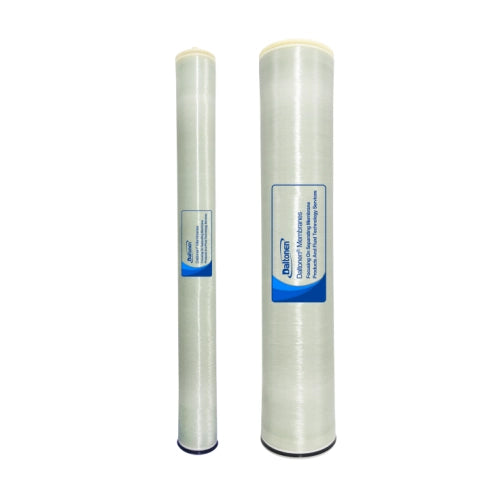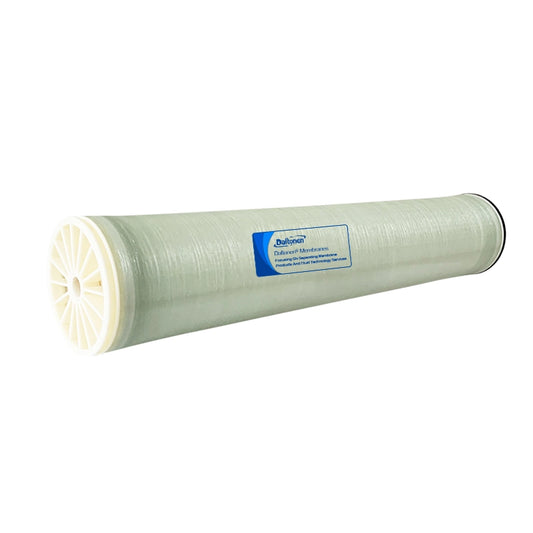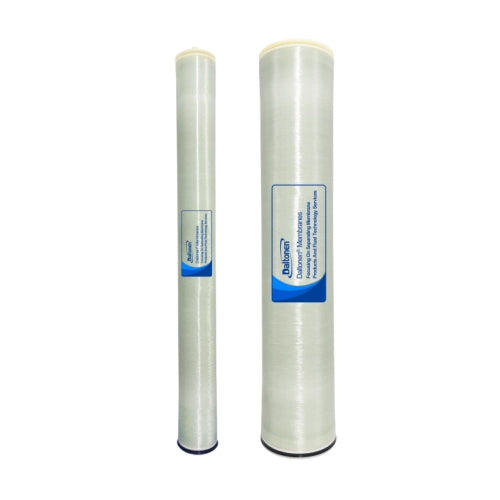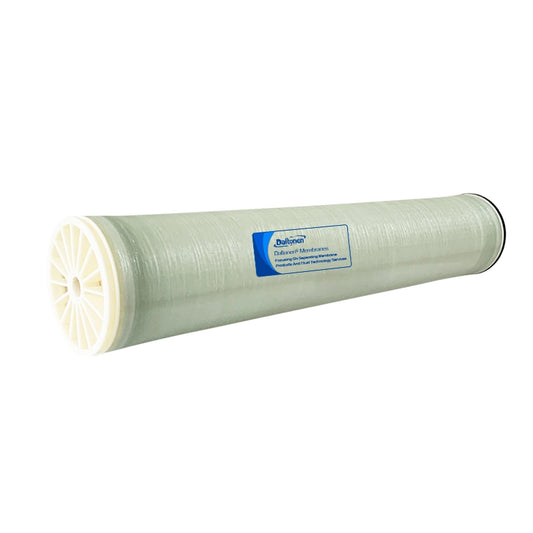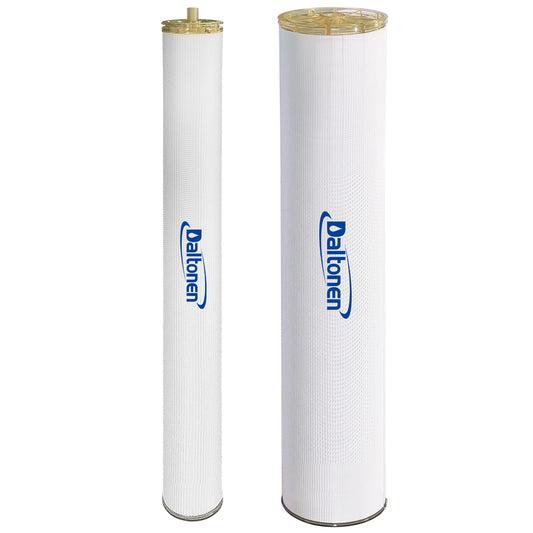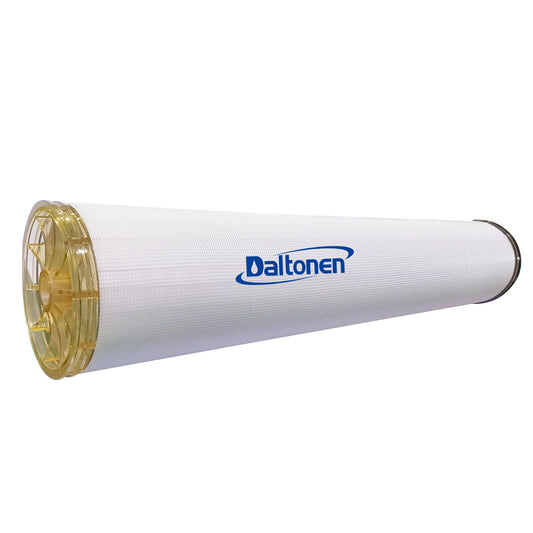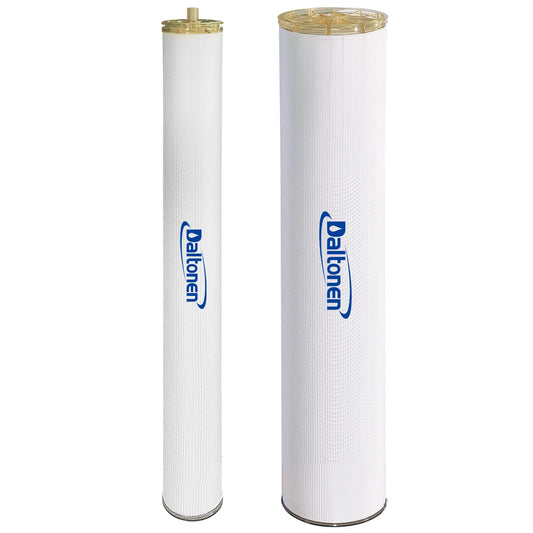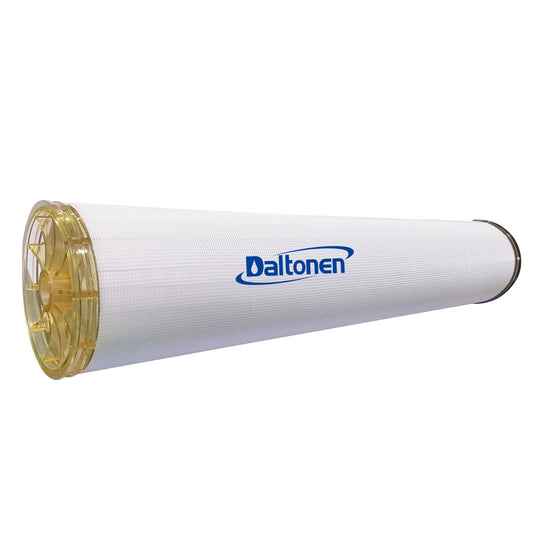How to Select Nanofiltration Membranes for Salt Production Plants?
30 Apr 2025
1. Background of Nanofiltration Membrane Selection in Salt Production Plants
1.1 Process Requirements of Salt Production Plants
The production processes of salt production plants mainly include the pretreatment of seawater or brine, evaporation and crystallization, as well as the separation and drying of salt. In these processes, the purification of water quality and the separation of ions are key steps, which directly relate to the quality of salt products and production efficiency. For example, in seawater salt production, it is necessary to remove a large amount of calcium, magnesium, and other ions to improve the purity of salt. In brine salt production, the removal of impurity ions can reduce equipment scaling and extend the service life of equipment. Traditional processes often rely on chemical precipitation and ion exchange methods, which have problems such as high cost, complex operation, and secondary pollution. Therefore, salt production plants urgently need an efficient, economical, and environmentally friendly separation technology to optimize the production process and improve production efficiency.

1.2 Advantages of Nanofiltration Membranes in Salt Production Plants
Nanofiltration membranes are a new type of membrane separation technology between reverse osmosis membranes and ultrafiltration membranes. They have unique pore structures and separation performance, and can effectively remove multivalent ions, organic substances, and microorganisms from water. In the application of salt production plants, nanofiltration membranes show significant advantages:
-
High-efficiency separation: Nanofiltration membranes have a high rejection rate for divalent and higher-valent ions, which can effectively remove calcium, magnesium, and other ions from seawater or brine to improve the purity of salt. For example, in a seawater salt production plant, the concentration of calcium ions in seawater was reduced by more than 90% after treatment with nanofiltration membranes, significantly improving the purity of salt products.
-
Energy saving and consumption reduction: Compared with traditional chemical treatment methods, the nanofiltration membrane separation process does not require the addition of a large amount of chemical reagents, reducing the use of chemical agents and subsequent wastewater treatment costs. At the same time, the operating pressure of nanofiltration membranes is relatively low, with energy consumption being only about 50% of that of traditional reverse osmosis membranes, greatly reducing energy consumption in the production process.
-
Environmentally friendly: The nanofiltration membrane separation process is a physical process that does not produce chemical reactions or secondary pollution, meeting the environmental requirements of modern industry. In the process of brine salt production, nanofiltration membranes can effectively remove organic substances and microorganisms, reducing the content of pollutants in wastewater and minimizing environmental impact.
-
Easy operation: Nanofiltration membrane systems have a high degree of automation, with simple operation and convenient maintenance. The operation process can be monitored and controlled automatically through a computer control system, reducing manual intervention and improving the stability and reliability of production.
-
Strong adaptability: Nanofiltration membranes can adapt to different water qualities and process requirements. Suitable membrane materials and membrane components can be selected according to the specific conditions of salt production plants to achieve the best separation effect. For example, in the treatment of high-salinity brine, the use of high-salinity-resistant nanofiltration membrane materials can ensure the stable operation of the membrane and good separation performance.
2. Technical Parameters of Nanofiltration Membranes
2.1 Pore Size and Selectivity
The pore size of nanofiltration membranes is one of the key factors affecting their separation performance. The pore size of nanofiltration membranes is usually around 1 nanometer, which can effectively retain divalent and higher-valent ions and some small molecular organic substances. Studies have shown that for seawater salt production, the rejection rate of calcium ions by nanofiltration membranes can reach more than 95%, and the rejection rate of magnesium ions can be around 90%. This high selectivity enables nanofiltration membranes to effectively remove key ions that affect the purity of salt products. In addition, the rejection rate of monovalent ions by nanofiltration membranes is relatively low, generally between 20% and 30%, which allows them to remove multivalent ions while retaining some monovalent ions to meet the requirements of ion balance in the salt production process.
2.2 Salt Rejection and Retention Rate
Salt rejection and retention rate are important indicators for measuring the performance of nanofiltration membranes. Salt rejection refers to the efficiency of nanofiltration membranes in removing salt from water, while retention rate indicates the ability of nanofiltration membranes to retain specific substances. In the application of salt production plants, the salt rejection rate of nanofiltration membranes is usually between 70% and 90%, depending on the salinity of the feed water and the performance of the membrane. For example, in brine salt production, the retention rate of sulfate ions by nanofiltration membranes can reach more than 98%, and the retention rate of silicate ions can be around 95%. These high retention rates enable nanofiltration membranes to effectively remove impurity ions that affect the quality of salt products and improve the purity of salt. At the same time, the retention rate of organic substances by nanofiltration membranes is also high, generally above 90%, which can effectively remove organic pollutants in water and reduce the burden of subsequent treatment.
2.3 Water Production and Flux
Water production and flux are important parameters for measuring the treatment capacity of nanofiltration membranes. Water production refers to the amount of water that nanofiltration membranes can treat in a unit of time, while flux indicates the amount of water that a unit area of membrane can treat in a unit of time. In the actual application of salt production plants, the flux of nanofiltration membranes is generally between 15 and 30 liters per square meter per hour, depending on the quality of the feed water, the performance of the membrane, and operating conditions. For example, in seawater salt production, the flux of nanofiltration membranes is usually around 20 liters per square meter per hour, while in brine salt production, the flux may be slightly lower, around 18 liters per square meter per hour. To increase water production, operating conditions can be optimized, such as adjusting pressure and temperature, to increase the flux of nanofiltration membranes. At the same time, regular cleaning and maintenance of nanofiltration membranes can effectively reduce membrane fouling, extend the service life of the membrane, and maintain high flux and water production.
3. Material Properties of Nanofiltration Membranes
3.1 Corrosion Resistance and Chemical Stability
Nanofiltration membranes used in salt production plants need to face complex chemical environments, so their corrosion resistance and chemical stability are important considerations.
-
Corrosion resistance: The feed water in salt production plants contains a large amount of corrosive substances such as chloride ions and sulfate ions, which can corrode the membrane materials. Studies have shown that polyamide composite nanofiltration membranes have good chlorine resistance. After soaking in a solution with a chloride ion concentration of 1000 mg/L for 30 days, the performance of the membrane remains stable, with a flux decline rate of only about 5%. This corrosion resistance enables nanofiltration membranes to operate stably in high-salinity and highly corrosive environments for a long time.
-
Chemical stability: During operation, nanofiltration membranes may come into contact with various chemical reagents, such as acids, alkalis, and oxidants. For example, during cleaning, sodium hydroxide solution may be used for alkaline cleaning, and citric acid solution may be used for acid cleaning. Experiments have shown that after soaking in 0.1 mol/L sodium hydroxide solution and 0.1 mol/L citric acid solution for 24 hours, the structure and performance of polyamide composite nanofiltration membranes do not change significantly, with retention rates and flux remaining above 95% of the initial values. This good chemical stability ensures the stable operation of nanofiltration membranes in different chemical environments, reducing the frequency of membrane replacement and lowering operating costs.
3.2 Temperature Resistance and Mechanical Strength
Nanofiltration membranes used in salt production plants also need to have good temperature resistance and mechanical strength to adapt to different operating conditions.
-
Temperature resistance: The production processes of salt production plants may generate high temperatures, especially in evaporation and crystallization processes. Nanofiltration membranes need to maintain stable performance within a certain temperature range. For example, polyamide composite nanofiltration membranes have small changes in flux and retention rate within the temperature range of 25°C to 45°C, with a flux change rate of only about 10% and a retention rate change rate within 5%. This good temperature resistance enables nanofiltration membranes to operate stably under the normal operating temperatures of salt production plants, eliminating the need for additional cooling equipment and reducing energy consumption and equipment investment.
-
Mechanical strength: Nanofiltration membranes are subject to certain pressures and water flow impacts during operation, so they need to have sufficient mechanical strength. Experiments have shown that the tensile strength of polyamide composite nanofiltration membranes can reach more than 10 MPa, which can withstand higher operating pressures and water flow impacts. In actual applications, nanofiltration membranes can operate stably under an operating pressure of 0.5 MPa, with no significant damage to the membrane structure and stable flux and retention rates. This good mechanical strength ensures the stability and reliability of nanofiltration membranes during long-term operation, reducing the risk of membrane damage and leakage, and improving the safety of the system.
4. Adaptability of Operating Conditions for Nanofiltration Membranes
4.1 Feed Water Quality Requirements
The performance and service life of nanofiltration membranes are closely related to feed water quality. In salt production plants, the complexity of feed water quality poses strict requirements for the selection of nanofiltration membranes.
-
Suspended solids and turbidity: Suspended solids and high turbidity in the feed water can cause blockage of the nanofiltration membrane surface, reducing flux. Studies have shown that when the feed water turbidity exceeds 5 NTU, the flux decline rate of nanofiltration membranes accelerates, and the service life is shortened by about 30%. Therefore, the concentration of suspended solids in the feed water should be controlled below 5 mg/L, and the turbidity should be below 1 NTU to ensure the efficient operation of nanofiltration membranes.
-
Organic content: Organic substances in the feed water can adsorb onto the membrane surface, forming a pollution layer that affects the separation performance of the membrane. Experiments have shown that when the chemical oxygen demand (COD) of the feed water exceeds 100 mg/L, the retention rate of nanofiltration membranes decreases by 10% to 15%, and the flux decreases by 20% to 30%. Therefore, the COD of the feed water should be controlled below 100 mg/L to reduce organic pollution of the membrane.
-
Hardness and alkalinity: Calcium, magnesium, and other hardness ions in the feed water can deposit on the membrane surface, forming a scale layer that reduces the flux and retention rate of the membrane. At the same time, water with high alkalinity can cause changes in the chemical properties of the membrane surface, affecting the performance of the membrane. Studies have shown that when the hardness of the feed water exceeds 200 mg/L (calculated as CaCO₃), the flux decline rate of nanofiltration membranes accelerates, and the service life is shortened by 20% to 30%. Therefore, the hardness of the feed water should be controlled below 200 mg/L, and the alkalinity should be controlled below 100 mg/L to reduce the formation of inorganic scale.
-
Microbial content: Microorganisms in the feed water can proliferate on the membrane surface, forming a biofilm that causes membrane pollution and flux decline. Experiments have shown that when the total bacterial count in the feed water exceeds 10⁴ CFU/mL, the flux decline rate of nanofiltration membranes accelerates, and the service life is shortened by 20% to 30%. Therefore, the total bacterial count in the feed water should be controlled below 10⁴ CFU/mL to reduce biological pollution.
4.2 Operating Pressure and Temperature Range
The operating pressure and temperature of nanofiltration membranes have an important impact on their performance and energy consumption.
-
Operating pressure: The operating pressure of nanofiltration membranes is usually between 0.5 MPa and 1.5 MPa. Studies have shown that within the pressure range of 0.5 MPa to 1.0 MPa, the flux and retention rate of nanofiltration membranes are relatively stable, and energy consumption is low. When the pressure exceeds 1.0 MPa, although the flux will increase, energy consumption will rise significantly, and the risk of membrane damage will increase. For example, in seawater salt production, the optimal operating pressure for nanofiltration membranes is around 0.8 MPa, at which the flux can reach 20 liters per square meter per hour, and energy consumption is about 50% of that of traditional reverse osmosis membranes. Therefore, the operating pressure should be reasonably selected according to the quality of the feed water and the performance of the membrane to achieve efficient and energy-saving operation.
-
Operating temperature: The operating temperature of nanofiltration membranes is generally between 5°C and 45°C. Studies have shown that within the temperature range of 25°C to 35°C, the flux and retention rate of nanofiltration membranes are relatively stable and perform best. When the temperature is below 25°C, the flux of the membrane decreases, and separation efficiency is reduced. When the temperature exceeds 35°C, the performance of the membrane may be damaged by heat, resulting in a decline in flux and retention rate. For example, in brine salt production, the optimal operating temperature for nanofiltration membranes is around 30°C, at which the flux can reach 18 liters per square meter per hour, and the retention rate remains above 95%. Therefore, the operating temperature should be controlled within a suitable range according to the specific process conditions of the salt production plant to ensure the stable operation of nanofiltration membranes.
5. Cost and Economic Assessment
5.1 Membrane Element Price
The price of nanofiltration membrane elements varies depending on the material, brand, specifications, and market supply and demand. Generally speaking, polyamide composite nanofiltration membranes, due to their excellent performance, are relatively expensive, with a price per square meter of membrane element ranging from 100 to 300 yuan. Imported brand membrane elements, due to their advanced technology and stable quality, are usually 20% to 50% more expensive than domestic membrane elements. For example, the price of a certain imported brand of nanofiltration membrane element is 250 yuan per square meter, while the price of a domestic counterpart is about 200 yuan per square meter. When selecting membrane elements, it is not only necessary to consider the initial investment cost but also to comprehensively consider the service life and performance stability of the membrane elements to assess their cost-effectiveness.
5.2 Operating and Maintenance Costs
The operating and maintenance costs of nanofiltration membrane systems mainly include energy consumption, cleaning agent costs, membrane replacement costs, and labor maintenance costs.
-
Energy consumption: The operating pressure of nanofiltration membranes is relatively low, with energy consumption being only about 50% of that of traditional reverse osmosis membranes. Taking the commonly used nanofiltration membrane system in salt production plants as an example, the energy consumption for treating 1 cubic meter of water is about 0.5 to 1.0 kilowatt-hours. Calculated at an average electricity price of 0.6 yuan per kilowatt-hour, the energy cost for treating 1 cubic meter of water is about 0.3 to 0.6 yuan. In seawater salt production, the energy cost of the nanofiltration membrane system accounts for about 15% to 20% of the total operating cost.
-
Cleaning agent costs: Nanofiltration membranes need to be cleaned regularly during operation to remove pollutants from the membrane surface and restore membrane performance. Cleaning agent costs vary depending on the cleaning frequency and type of cleaning agent. Generally, the cleaning agent cost for cleaning a nanofiltration membrane system once is about 100 to 300 yuan. According to actual operating data, the nanofiltration membrane system in salt production plants needs to be cleaned 1 to 2 times a month on average, with annual cleaning agent costs ranging from 1200 to 7200 yuan.
-
Membrane replacement costs: The service life of nanofiltration membranes is generally 3 to 5 years, depending on the material of the membrane, operating conditions, and maintenance. When the performance of the membrane elements declines to a certain extent and cannot meet production requirements, the membrane elements need to be replaced. As mentioned earlier, imported brand membrane elements are more expensive, and so are the replacement costs. For example, for a medium-sized salt production plant, the membrane element replacement cost for the nanofiltration membrane system is about 100,000 yuan per year. If domestic membrane elements are chosen, the replacement cost can be reduced to about 80,000 yuan per year.
-
Labor maintenance costs: The operation and maintenance of nanofiltration membrane systems require professional technicians to operate and manage. Labor maintenance costs include the wages of technicians, training costs, and the costs of maintenance tools for equipment. Generally, the annual labor maintenance cost for a nanofiltration membrane system in a medium-sized salt production plant is about 50,000 yuan.

6. Market and Supplier Selection
6.1 Major Suppliers and Brands
In the global nanofiltration membrane market, there are several well-known suppliers and brands, each with its own advantages in product quality, performance, and market share. The following are some of the main suppliers and brands:
-
DuPont: As a global leader in specialty materials, DuPont's nanofiltration membranes hold an important position in the market. Their nanofiltration membranes feature high rejection rates, low energy consumption, and good chemical stability. For example, DuPont's NF90 nanofiltration membrane performs well in treating high-salinity water, with a rejection rate of more than 98% for divalent ions, and is widely used in seawater desalination and brine treatment.
-
Daltonen Membrane: Daltonen Membrane offers a wide range of conventional nanofiltration membranes with molecular weight cutoffs of 100, 200, 300, 600, 800 to 2000, which can meet the processing requirements for selective separation of different materials. Under an operating pressure of 0.4 to 0.7 MPa, it can achieve selective separation of special salts or organic substances and is widely used in the concentration and purification of food and beverages, separation, refining, and concentration in petroleum, chemical, and biopharmaceutical industries, and near-zero discharge treatment of municipal wastewater. Industrial nanofiltration membrane elements can be selected with special flow channels according to the characteristics of the materials.
-
Suez: Suez is a company with profound technical accumulation in the field of water treatment, and its nanofiltration membranes perform well in salt production plants. Suez's NF series nanofiltration membranes have good corrosion resistance and mechanical strength and can operate stably in high-salinity and highly corrosive environments for a long time. For example, in a practical application in a brine salt production plant, after 3 years of operation, the flux and retention rate of Suez's nanofiltration membranes remained at a high level, showing a good service life.
-
Domestic suppliers: In recent years, the domestic nanofiltration membrane market has developed rapidly, and a number of excellent domestic suppliers have emerged. The products of these suppliers are gradually approaching international brands in performance and quality and have a price advantage. For example, the application of a domestic nanofiltration membrane brand in seawater salt production shows that its rejection rates for calcium and magnesium ions can reach more than 95% and 90%, respectively. The flux and energy consumption are comparable to those of imported brands, but the price is 20% to 30% lower, providing a more cost-effective choice for salt production plants.
When selecting suppliers, salt production plants should comprehensively consider factors such as product performance, quality, price, brand reputation, and market share to ensure that the selected nanofiltration membranes can meet the requirements of the production process and maintain stable and reliable performance during long-term operation.
6.2 After-sales Service and Technical Support
The stable operation of nanofiltration membrane systems cannot be separated from good after-sales service and technical support. High-quality after-sales service and technical support can help salt production plants solve problems that arise during operation in a timely manner, extend the service life of membranes, and reduce operating costs. The following are key factors to consider regarding after-sales service and technical support when selecting suppliers:
-
Technical support team: Suppliers should have a professional technical support team that can provide timely technical consultation and solutions for salt production plants. For example, when the performance of the nanofiltration membrane system declines or malfunctions, the technical support team should be able to respond quickly, helping salt production plants solve problems and restore the normal operation of the system through remote diagnosis or on-site services.
-
Training services: Suppliers should provide systematic training services for the operators and maintenance personnel of salt production plants, including the principles of nanofiltration membranes, operating procedures, maintenance and care, and other content. Through training, salt production plant personnel can master the operation and maintenance skills of nanofiltration membrane systems, improving the efficiency and stability of system operation. For example, a supplier provided a one-week on-site training course for a salt production plant, covering the operation, cleaning, and troubleshooting of nanofiltration membrane systems. After the training, the operators of the salt production plant were able to independently complete daily operation and maintenance tasks.
-
Spare parts supply: Suppliers should be able to provide spare parts for nanofiltration membrane systems in a timely manner, including membrane elements, seals, pumps, and other key components. When equipment malfunctions and spare parts need to be replaced, they can be supplied quickly to reduce equipment downtime. For example, a supplier has established a comprehensive spare parts inventory management system and can ship within 24 hours after receiving a spare parts order from a salt production plant, ensuring that the nanofiltration membrane system of the salt production plant can return to normal operation as soon as possible.
-
After-sales service network: Suppliers should have a wide after-sales service network that can provide timely after-sales service in the region where the salt production plant is located. For example, an international brand supplier has established multiple service centers around the world to provide fast-response after-sales service for salt production plants in different regions. In China, some domestic suppliers have also improved the coverage and response speed of after-sales service by establishing regional service centers and partner networks.
When selecting nanofiltration membrane suppliers, salt production plants should regard after-sales service and technical support as important considerations. By signing long-term cooperation agreements with suppliers, they can ensure continuous technical support and after-sales service throughout the entire life cycle of the nanofiltration membrane system, thereby improving system operating efficiency and economic benefits.
7. Case Studies and Experience Sharing
7.1 Typical Application Cases in Salt Production Plants
A large-scale seawater salt production plant located in a coastal area faced problems such as low purity of salt products and frequent equipment scaling in traditional processes, which severely affected production efficiency and economic benefits. To solve these problems, the plant introduced nanofiltration membrane technology and selected a polyamide composite nanofiltration membrane. The pore size of this nanofiltration membrane is about 1 nanometer, with a calcium ion rejection rate as high as 96% and a magnesium ion rejection rate of 92%, effectively improving the purity of salt products. In actual operation, the flux of the nanofiltration membrane system remained stable at around 22 liters per square meter per hour, with energy consumption being only 45% of that of traditional reverse osmosis membranes. By optimizing operating conditions, such as controlling the feed water turbidity below 0.8 NTU and the feed water COD below 80 mg/L, the service life of the nanofiltration membrane was extended to over 4 years. After introducing nanofiltration membrane technology, the purity of salt products increased by 20%, the equipment scaling rate decreased by 60%, production efficiency was significantly improved, and the annual economic benefit increased by about 1.5 million yuan.
Another inland brine salt production plant, due to the high content of impurity ions in the brine, found it difficult to effectively remove them with traditional processes, resulting in unstable product quality and insufficient market competitiveness. The plant adopted a high-salinity-resistant nanofiltration membrane, which had a sulfate ion rejection rate as high as 99% and a silicate ion rejection rate of 97%, effectively removing key impurities that affected product quality. The water production of the nanofiltration membrane system in actual operation could reach 16 liters per square meter per hour, and it operated stably under an operating pressure of 0.6 MPa with low energy consumption. By strictly controlling the feed water hardness below 180 mg/L and alkalinity below 90 mg/L, the flux and retention rate of the nanofiltration membrane remained at a high level, with a service life of 3.5 years. After applying nanofiltration membrane technology, product quality was significantly improved, market share increased by 30%, and annual economic benefits increased by about 1 million yuan.
7.2 User Feedback and Suggestions for Improvement
In the above cases, the feedback from salt production plants on the use of nanofiltration membranes was generally positive, but some suggestions for improvement were also put forward. First, some salt production plants reflected that during the installation and commissioning stage of nanofiltration membranes, due to the lack of professional technical support, some problems occurred in the initial operation of the system, such as membrane element installation improper leading to leakage and
Tags:
